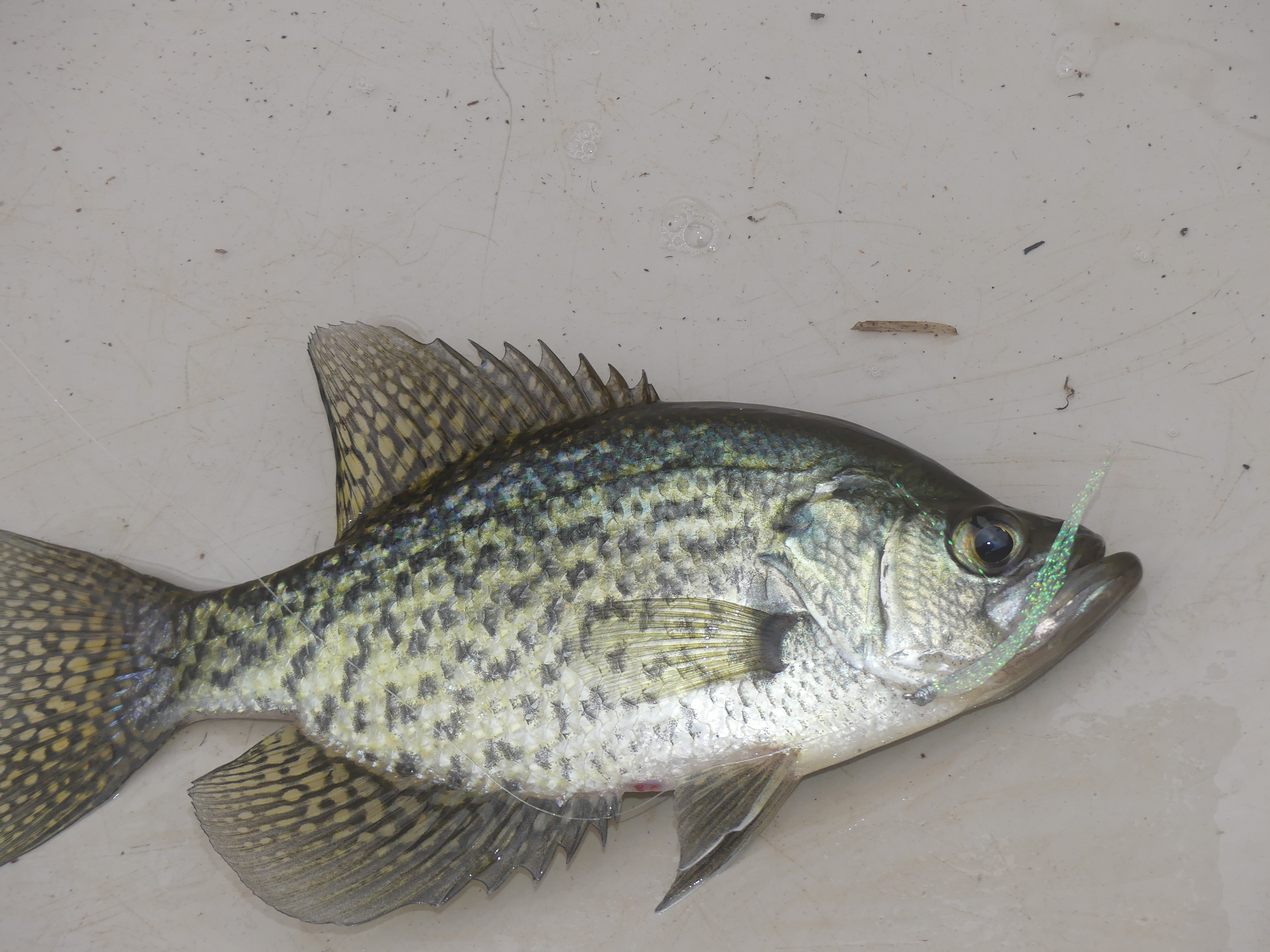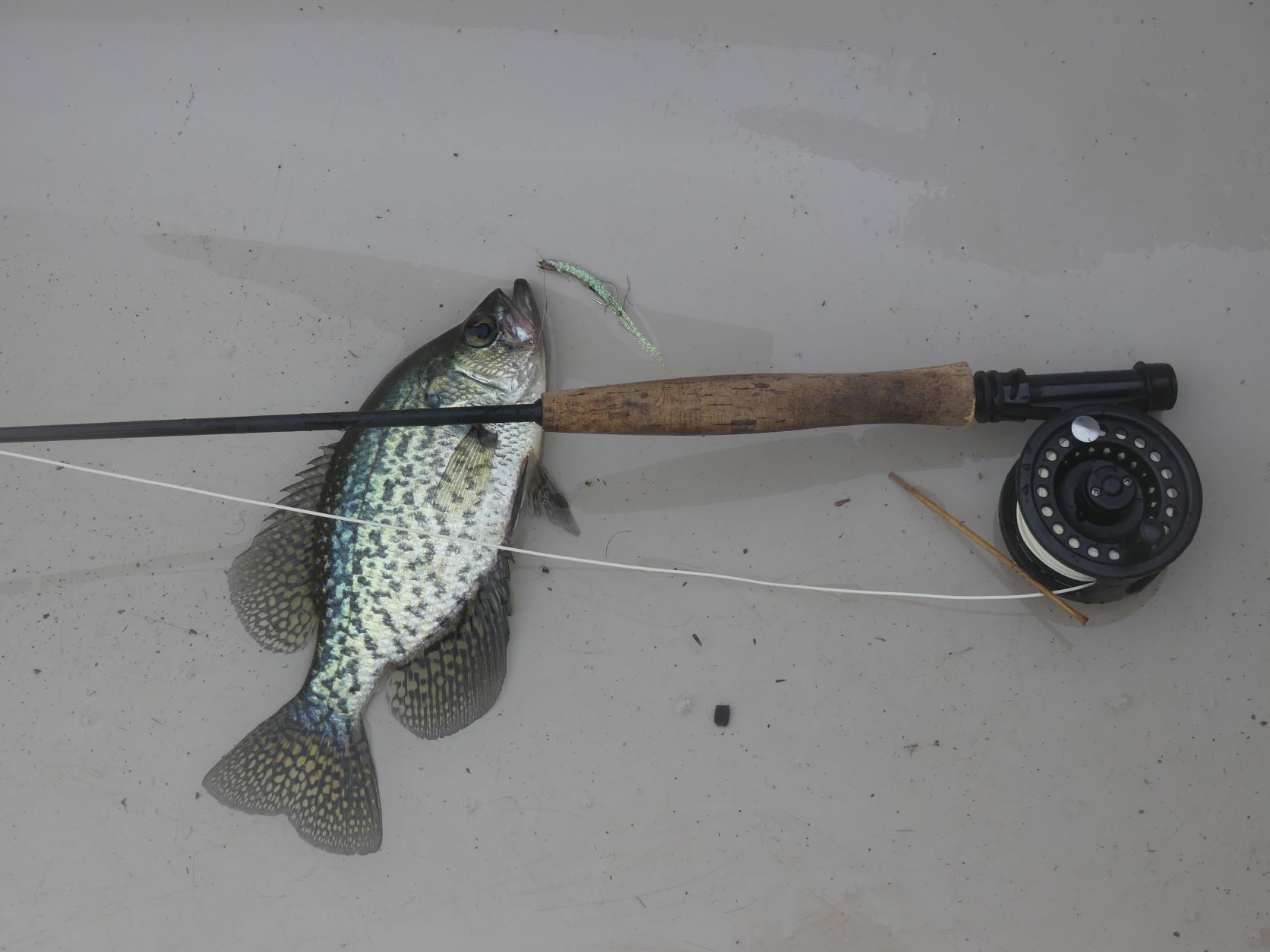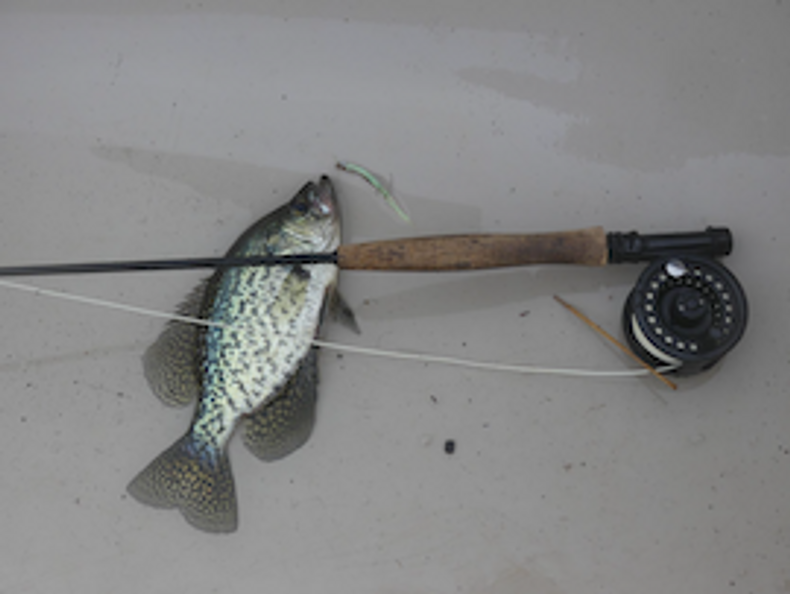Believe it or not, spring will be here before long- in some parts of the country, spring is already here. And one of the best things about springtime is that as the water warms fish of all kinds wake up from winter lethargy. In particular, fly fishing fans can catch a bunch of diecious fish- both black and white crappie- in every part of the country at this time.
How to go About Fly Fishing for Crappie
Although the long rod is not the first thing most anglers think about when it comes to crappie fishing, the truth is that fly casters can use the long rod to catch a bunch of crappies and have a ball while doing it.
First, anglers need to make sure the water they are fishing does have crappie in it. Smaller waters, ponds, tiny lakes, and creeks may not have crappie. But almost all larger lakes and reservoirs and bigger rivers will have good populations of crappie for fly anglers to chase.
Fly anglers may want to fish for crappie from a boat of some kind. Small flat bottom Jon boats, canoes, and kayaks are prime crappie fishing craft, and with a little practice, most fly anglers in smaller boats can cast a crappie fly quite sufficiently well to fool crappie. It is perfectly possible in some situations to walk the shoreline and fly cast to spawning crappie, but since crappie love to hold around trees, casting can be difficult at times. Expect to leave a few crappie flies in the trees.
When fishing for crappie in spring, fly anglers will want to work around downed trees, stumps, and any other solid structure in the water. Old boat docks can be great places to find springtime crappie as they prepare to move into very shallow water to spawn.
Once the crappie does go on the spawn, fly anglers will want to work the very shallow waters right up against the bank- again near cover is best. If a stand of willow trees can be found, crappie will be under them- crappie love to spawn under willow trees.

How to Rig Fly Gear for Crappie
Rigging for crappie is not difficult. Any three to five weight rod eight or nine feet long will cast a crappie fly. Floating lines work well, and the leader can be as simple as a three-foot-long butt section of 8 lb. monofilament with a tippet of 4 or 6 lb. mono. The 6 lb. mono tippet might be best in larger waters because it is not at all uncommon to have a respectably large bass take a crappie fly.
Long casts are usually not necessary for crappie when fly fishing. If the angler and fly rod can put the crappie fly out thirty feet or so to reach the shallow cover where crappie tend to hold, that will be adequate.
Crappie are not particular eaters in spring. They feed heavily before and during spawning, and any fly which remotely resembles a small minnow will work. This is a good time to try those not-perfect streamers which don’t work for trout. I like a small streamer, say about two or two and half inches long, with a minimal body and a wing made of some color of flashy material. Crappie flies do not need to be elaborate, perfect ties. Just enough tinsel and feathers to suggest a small minnow works quite well. Silver, gold, and even sometimes red flash materials are good crappie colors for flies.
I have come to trust and treasure my GBFS four and five weight graphite rods for spring crappie fishing. These rods accept my poor casting technique and manage to lay the line on the water acceptably for crappie fishing. The action of these graphite rods is fast, but it is controlled and doesn’t promote line slap or tangled lines- I do like my self-made GBFS graphite rods.

Special Tips
When a fly angler connects with a crappie, she or he should not be in a hurry to leave the area. Crappie are schooling fish, and where there’s one, there will be more.
Another key thing to keep in mind when fly fishing for springtime crappie is to retrieve the streamer slowly, Crappie will not chase down a too-fast moving fly. Anglers should make a good cast, let the fly sink and watch the line! Very often crappie will take a small streamer as it sinks. The fly line will twitch, and this is when the hook should be set. Crappie flies should be retrieved very slowly letting the material of the fly make the action of the fly- not the angler. This kind of still water fishing requires patience, but when a good school of crappie is located, the action is usually quite fast.
And finally, once a fly angler finds the crappie and puts a few in hand, it is important to remember that there are few things more tasty and rewarding for an angler than a mess of fresh crappie fried up right- these springtime crappie are great eating fish.

